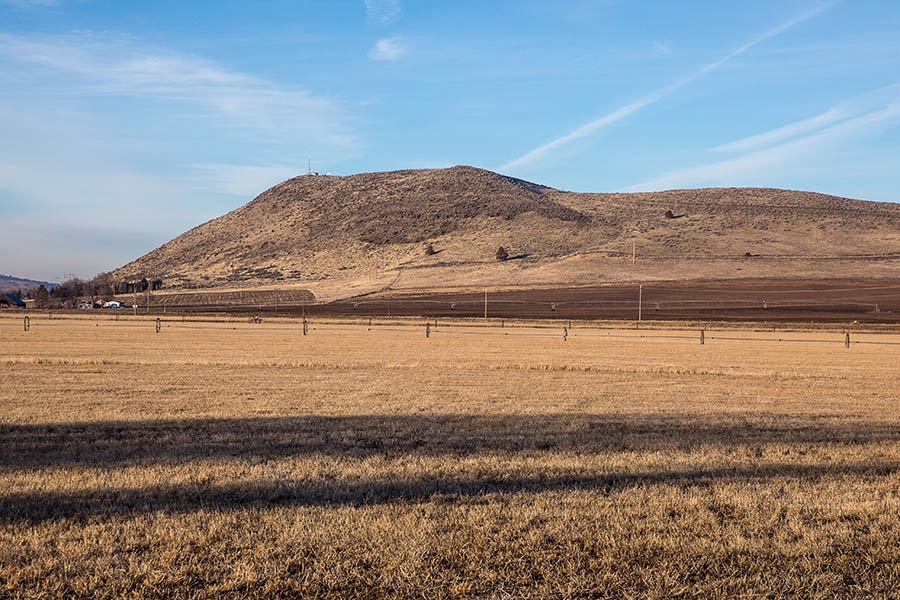The $250 million package would provide funding for infrastructure projects, disaster mitigation, data collection — and payments to workers impacted by severe drought.
Sponsors of a bipartisan drought relief bill before the Oregon Legislature this session are looking for ways to lower the bill’s $250 million price tag, saying the Ways and Means Committee’s newly adopted funding framework is likely to result in cuts to the package.
The drought relief package, introduced in mid-March by Reps. Ken Helm (D-Beaverton) and Mark Owens (R-Crane) proposed allocating $250 million in funding for research, water retention purification infrastructure projects and emergency planning to the House Committee on Agriculture, Land Use, Natural Resources, and Water to provide drought relief for rural Oregonians.
Funded primarily through House Bill 3124, the package would provided income assistance to people put out of work from drought, as well as $55 million to water projects related to agriculture; $38 million to water projects for fish and $111 million in water infrastructure investments.
But sponsors now say that the package faces cuts due to a funding allocation framework adopted by the Ways and Means committee last week, which budgeted $325.6 million for “top state priorities,” which includes managing Medicaid eligibility and retaining health and dental coverage for low-income adults who risk losing Medicaid.
“After funding, continuing service levels across all agencies and providing for education we have $325 million to work with, which is nothing,” Helm tells Oregon Business. “So, there are a lot of tough decisions that need to be made.”
The bill’s sponsors declined to say how much money could be cut from the package but they did outline how they would approach lowering the price tag.
Helm says there are large portions of the draft package that could potentially come into agencies’ budgets or policy option packages, and that some research and data collection portions of the package could be duplicated by parts of the Governor’s Recommended Budget.
Helm also says some programs can be funded using federal money, including the Environmental Protection Agency’s Clean Water State Revolving Fund and Natural Resources Conservation Service, which offer 4-to-1 matching funding for states’ investment in the package’s water and climate adaptation projects, translating into approximately $60 million in federal funds for Oregon.
Owens says slashing the drought mitigation package extensively would send exactly the wrong message to rural Oregonians, who continue to see themselves underrepresented in Salem politics.
“A lot of our rural communities, our farmers and ranchers and those in recreation have a hard time seeing themselves in the CHIPS Act, or in a $1 billion dollar new bridge,” says Owens. “But all of rural Oregon see themselves in the drought package. That’s going continue to be one of my messages moving forward.”
Owens says unfunded projects could also be passed as bond measures, and expressed confidence the total package could still find a way to be fully enacted.
“There are multiple ways we can successfully fund the majority of the things that are currently in this package,” says Helm. “Will all of them make it? Probably not. Should we find a way to fund this in its entirety? Yes. Are we going to be able to do that? The jury’s still out.”
Owens and Helm acknowledged the importance of drought mitigation in adapting to climate change, which both representatives both agree is measurably underway. They say certain portions of the bill — including emergency funding to pay workers impacted by drought — may need to grow as time goes on and as Oregon’s climate becomes more unpredictable.
“We both feel that we have to plan for drought in the next several decades. Everything shows us that we’re going to be a water-constrained environment for the near midterm long term with climate change, and other factors,” says Owens.
In 2021, Oregon set a drought record with over 25% of the state experiencing severe drought, when dry conditions become powerful enough to reduce power generation. The last time Oregon experienced that severity of drought was 2004, but that year only 5% of the state was affected.
Both representatives vowed to continue advocating for the package and for HB 3124 as it evolves. The bill has a public hearing and work session scheduled for April 3.
To subscribe to Oregon Business, click here.




